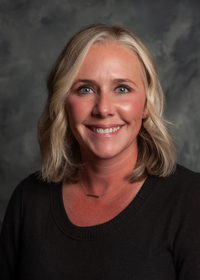Information Possibly Outdated
The information presented on this page was originally released on December 13, 1999. It may not be outdated, but please search our site for more current information. If you plan to quote or reference this information in a publication, please check with the Extension specialist or author before proceeding.
Ag Research Gets A High-Tech Boost
By Rebekah Ray
MISSISSIPPI STATE -- Research at Mississippi State University is developing new ways to apply space-age technologies to the state's agriculture in hopes of increasing efficiency and yields.
This research is being conducted by the Mississippi Agricultural and Forestry Experiment Station through the Advanced Spatial Technologies for Agriculture and the Remote Sensing Technologies Center at MSU.
Recent tours brought MAFES, MSU and U.S. Department of Agriculture researchers together to observe these projects around the state. In its third year of funding, the Advanced Spatial Technologies for Agriculture project oversees 26 research initiatives, an increase from eight initial projects in 1997. In 1999, it was funded by a $1 million USDA grant.
"Tours help scientists and administrators focus on problems and solutions. It promotes communication among scientists who deal with similar issues in different locations and sparks new ideas," said Dr. David Laughlin, MSU agricultural economist and tour organizer.
Dr. David Shaw, MAFES researcher and director of the Remote Sensing Technologies Center, said tours allow university faculty to communicate their preliminary research and collaborate their efforts among disciplines.
"Management decisions for specific sites and remote sensing are showing production agriculture in a completely different way by providing research that lets us apply agricultural chemicals more precisely, monitor crop stress and yields and improve the economic and environmental aspects of production," Shaw said.
Research at MSU has been divided into five disciplines: soil fertility, pest management, agricultural and biological engineering, natural resources and environmental economics. Numerous projects are underway, but a few are highlighted.
Soil Spatial Variability on Sweet Potato Yield and Quality. The sweet potato is an important high value crop in Northeast Mississippi that responds well to site specific management. Market varieties of sweet potatoes differ greatly, and growers report better yields and higher quality potatoes in some areas than in others.
Nutrients such as potassium, phosphorous, zinc, copper and manganese are important to sweet potato production. MAFES researchers are using Global Positioning System technology to sample a plot near the Pontotoc Experiment Station to determine soil chemical and physical properties that affect sweet potato growth, yield and quality.
Soil Chemical and Physical Properties and Their Influence on Soybean Yield in Mississippi. MAFES research is investigating how GPS and Geographic Informational System technology can gather, store and manipulate site-specific information such as yield, soil chemical and physical properties, and weed populations to determine how these affect soybean production.
From this research, producers can make better-informed site-specific management decisions than currently possible.
Spatial Technologies and Precision Farming Improve Monitoring and Management of Agricultural Pests. Each year, the management and control costs of insect pests in row crops are enormous. Several researchers are using GPS and remote sensing imagery to map agricultural systems. This imagery has already proven useful in showing crop conditions and the possible presence of insects. This technology can provide opportunities to design more efficient and precise sampling treatments for insects.
GPS Wastewater Tracking System for Commercial Swine Production. Applying swine lagoon waste to crops is an effective use of animal waste, but it causes concern among local residents. A major problem associated with land application is the lack of a third-party monitoring process, so swine producers presently keep their own records. Researchers have mounted receiver and data collection equipment onto equipment that applies swine waste to monitor application.
Accessing Potential Fecal Coliform Inputs to Nearshore Waters. During harvest season on the Mississippi Gulf Coast, oyster reefs may close from elevated levels of fecal coliform bacteria in the water. This bacteria, along with other pathogens that cause illnesses, is present in concentrated amounts in untreated or improperly treated sewage effluents.
Health and natural resource agencies use the presence of this bacteria to indicate water quality. MAFES researchers are using remote sensing to determine the presence and levels of fecal coliform in water and to detect contamination to a water body from failing septic tanks.
Through these varied research projects, MAFES is finding different ways to use satellite technology to improve Mississippi agriculture.
Contact: Dr. David Laughlin, (662) 325-7987



